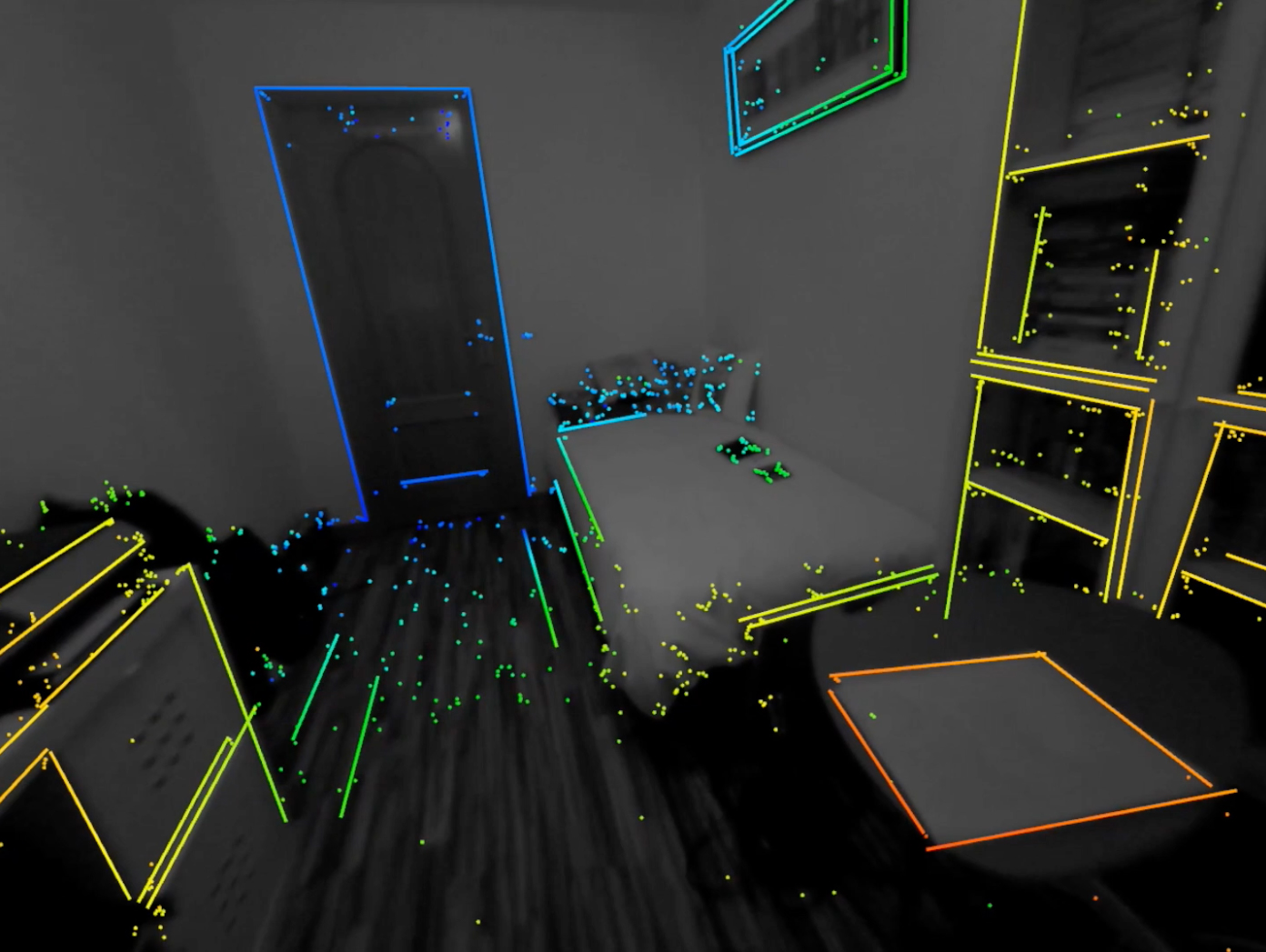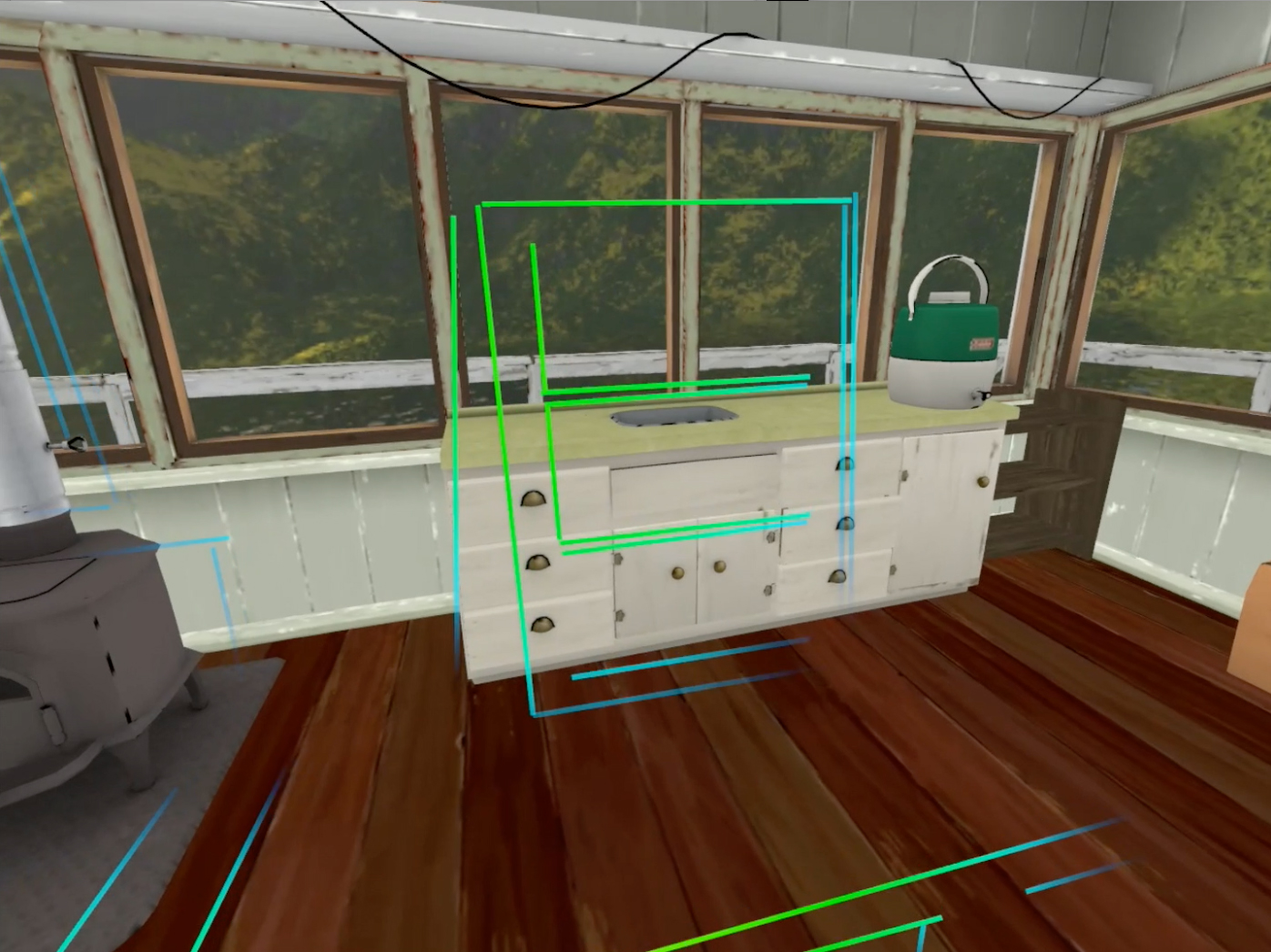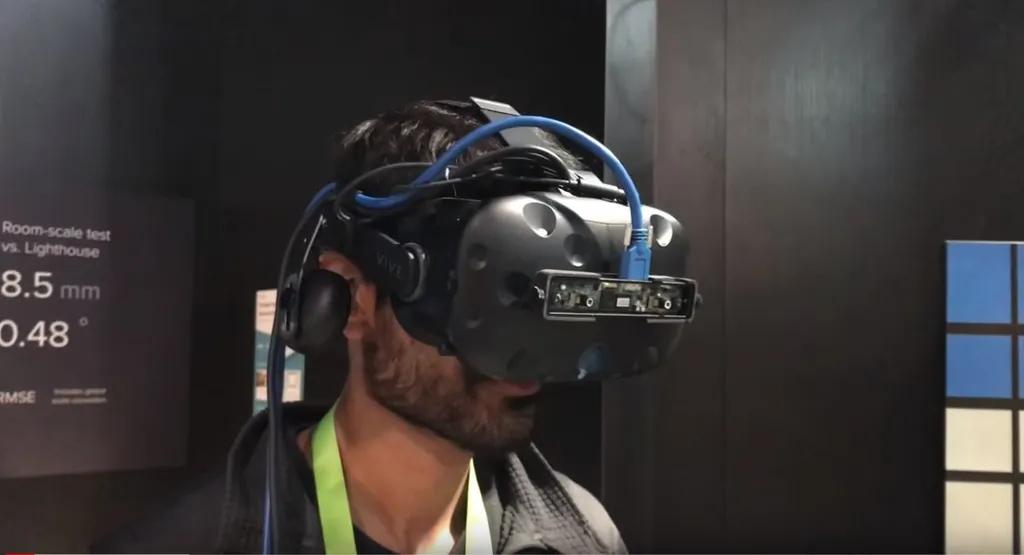The accuracy of tracking systems is the real battlefield on which the VR wars will be won. From the lighthouse tracking employed by HTC and Valve to power the Vive to the cameras used by Oculus, or inside-out systems already in use by Windows’ VR platform, there are a lot of avenues being explored.
It’s no secret that inside-out (meaning no external tracking sensors at all) is the ideal scenario so you can truly be untethered and portable. But the main issue is that in most cases the inside-out tracking systems aren’t as accurate as their external sensor counterparts, or if they are, they’re likely too expensive for headset manufacturers to include. That’s where Occipital comes in.
This San Francisco-based company has created an inside-out tracking system of their own for VR and AR headsets that’s about as efficient and accurate as the Vive’s own lighthouse system. The demo in the video above and the one I tried at their offices were both dual camera-based, but they claim to have one of comparable quality that uses a single camera and IMU as well.
Using this little device on the front of a VR headset you can get full 6DOF roomscale tracking. When paired with a backpack PC or wireless adapter you’ve eliminated almost all restrictions on your ability to move around the world.
One of the major issues, though, is that this doesn’t account for your physical space. If you don’t have external sensors and a wire to restrict your movement, wouldn’t you end up just walking into walls and tables and chairs around your house? Thanks to Occipital’s real world scanning technology via SLAM, that’s no longer an issue.

As you can see in the image above, the cameras will not only track your headset movement, but also scan the world around you to create a reliable depth map and mark objects in your path. The color of lines will change from blue, to gree, to yellow, to orange, and then red if you get too close.
I walked around an entire conference room without ever bumping into anything thanks to this system. It took a few minutes for me to trust everything, but once I did I walked pretty confidently around without even using my hands to guide myself.
“Until now, most 6-DoF positional tracking have required complex hardware packages to effectively track users’ movements,” reads a prepared fact sheet from Occipital. “Examples using complex hardware include Lighthouse for HTC Vive, Oculus’s Constellation tracking system and even Occipital’s Structure Sensor used in the Bridge MR/VR headset. With Occipital Tracking, any AR/VR product developer can enable 6-DoF tracking with accuracy approaching that of Lighthouse at a fraction of the cost. Much like HTC Vive’s Chaperone system, Occipital Tracking can also identify obstacles in the user’s environment and represent them in the virtual world as the user approaches to avoid collisions and potential injuries.”

The Occipital Tracking system is available completely for free up to 10,000 units for anyone that’s making a consumer-grade AR/VR device. But if you’re making between 10,000 and 100,000 units it’ll run you $10 per unit, or $7 per unit if over 100,000 total. For products that cost above $700 MSRP, it’ll be 3% MSRP.
In addition to this tracking system they showed me a demo of their iPhone-powered roomscale AR headset, the Occipital Bridge. You can see our impressions of that in the video below:
If you’d like to get in touch with the company to inquire about the tracking system units, you can contact them at their official website. And let us know what you think of the Occipital Tracking system down in the comments below!
Featured Image: Occipital

























